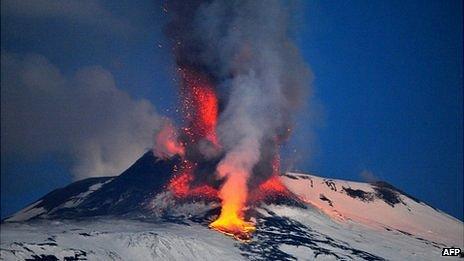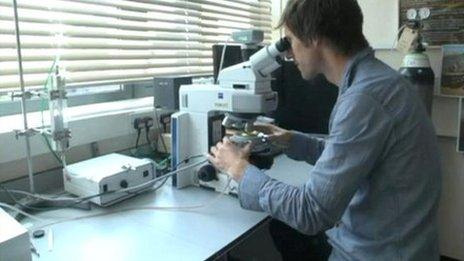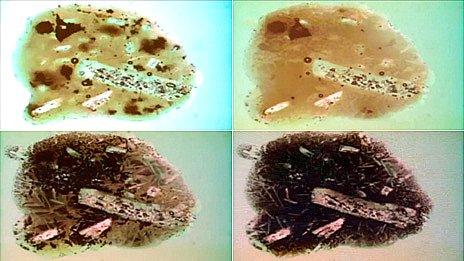Lancaster University 'cooks volcanic lava' in new research
- Published

The university hopes new research will eventually help forecast where lava is going to be moving so people can be evacuated
Monitoring volcanic lava flow comes with many obvious risks attached, but what if you could do it in a controlled laboratory environment?
Scientists at Lancaster University have been doing just that, thanks to a £70,000 machine which allows volcanologists to "cook lava".
The tiny furnace is capable of reaching 1,500 degrees Celsius - comfortably reaching the temperature of the hottest magma.
Dr Hugh Tuffen, from the Lancaster Environment Centre, said the work could eventually "help to save lives".
Their research focuses on the growth of crystals inside flowing lava as it cools and loses gas, with crystal growth thickening the lava and restricting how far it can flow.

The £70,000 machine was funded by the Natural Environment Research Council
Lancaster University said previous research over the years has looked at crystals within inactive lava flows that have completely cooled.
Dr Tuffen said: "As far as I know we are the only team using this powerful technology for this purpose - we take lava, melt it and watch the crystals grow in real time.
"The lava actually thinks it's back inside a lava flow and so does what it does in nature. The trick is that we can spy inside the lava using a microscope and directly observe what's happening."
The machine, funded by the Natural Environment Research Council, has generated interest from abroad, with experts from the USA, Germany and France working with the university on various projects.
Dr Tuffen said the technology offers a breakthrough for tracking lava flow and will be used for volcano hazard planning.
The university, which offers a Masters degree in Volcanology, said the "fun bit of kit" was well liked by students.

Using a microscope, crystals can be seen to grow as the lava cools down
Dr Tuffen said: "One student is looking at lava from the famous eruption of Mount Unzen in Japan in the 1990s that killed many people and is studying how crystals grew inside it.
"Another has taken samples from the world's most recent eruption of sticky, silica-rich rhyolite magma in Chile. They have frothed them up to make pumice, measuring how quickly the bubbles grew."
Dr Tuffen recently visited Puyehue-Cordón Caulle volcano in Chile, which has produced lava flow fast enough to fill an Olympic swimming pool every 30 seconds.
He said the new technology may eventually help communities deal with large eruptions.
"We hope that, ultimately, our research could help to save lives by helping forecast where lava is going to be moving so people can be evacuated in time," he said.
- Published5 July 2012
- Published30 May 2012
- Published23 May 2013
- Published10 April 2013
- Published26 October 2012